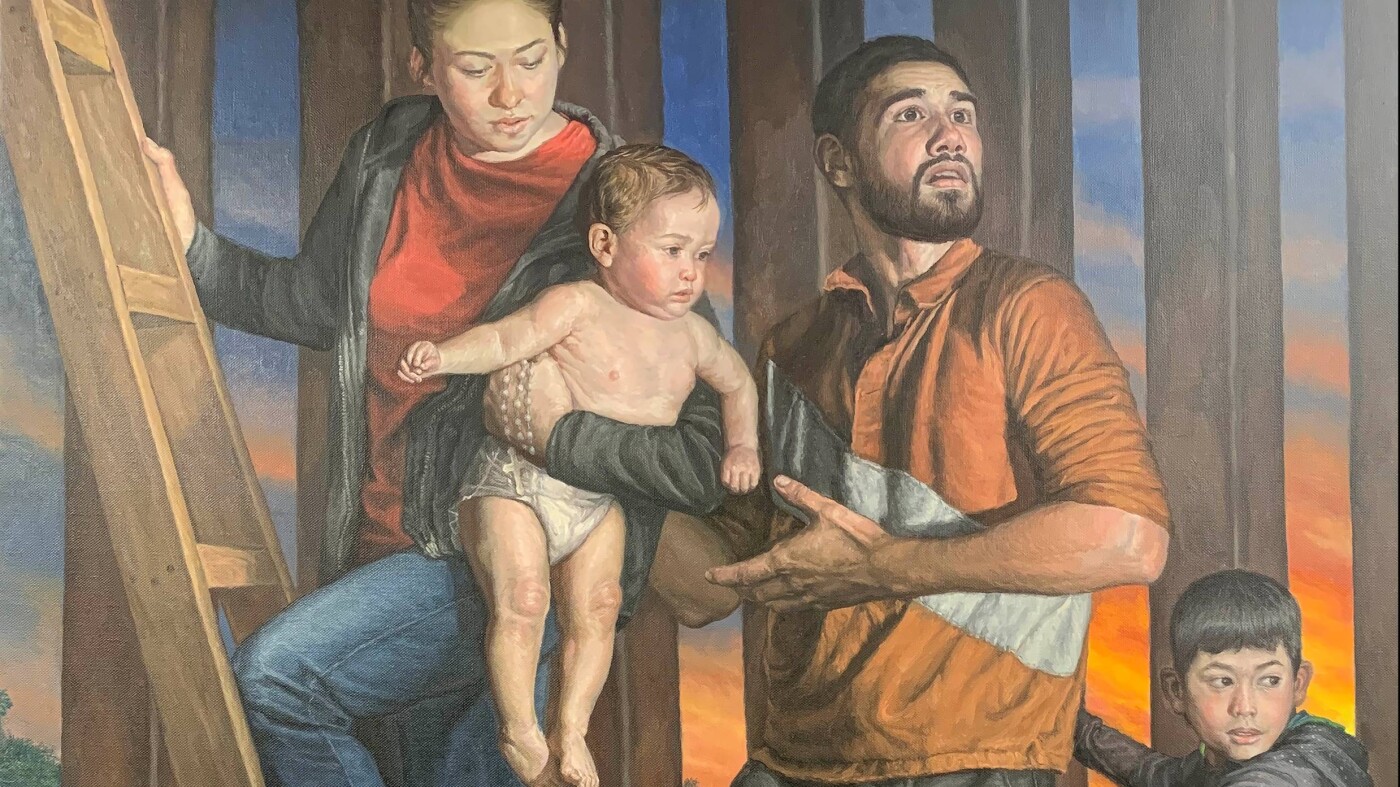The recent controversy surrounding the Smithsonian Institution and its artists highlights the tensions between creative expression and political ideology in contemporary America. A significant aspect of this ongoing debate is encapsulated in the White House’s listing of what it deems “objectionable” artworks. This list includes various works from the Smithsonian’s collections and exhibitions, which the administration perceives as divisive or ideologically driven. Artists like Rigoberto Gonzalez, Ibram X. Kendi, and Amy Sherald find themselves in the crosshairs as their works challenge prevailing narratives on race, immigration, and identity.
### The Objectionable Art List and Its Implications
The White House sent an unprecedented letter to eight Smithsonian museums, demanding a detailed report on their exhibition plans and social media content, allegedly as part of a “comprehensive review” aimed at aligning the institutions with President Trump’s cultural directives. This demand has been interpreted as an attempt to sanitize historical and cultural narratives, especially concerning themes of race, immigration, and sexuality.
Critics argue that this initiative represents a significant threat to academic freedom and artistic expression. The notion of replacing “divisive or ideologically driven language” with what is deemed “unifying” history raises questions about whose history is represented and whose voices are marginalized.
### Artists’ Reactions and Historical Context
Artists mentioned in the White House newsletter have expressed a mix of indignation and resilience. For instance, Rigoberto Gonzalez’s painting “Refugees Crossing the Border Wall into South Texas” critiques anti-immigrant sentiments, yet it has been accused of glorifying illegal border crossings. Gonzalez himself, while surprised by the mention, sees it as a validation of his political messages.
Similarly, Ibram X. Kendi, a prominent scholar on racism, described the targeting of his research as a concerted effort to invalidate academic scrutiny of racism in America. Kendi’s work, including his book “How to Be an Anti-Racist,” confronts historical narratives that, according to him, the current administration seeks to undermine. Echoing sentiments from America’s tumultuous past, Kendi likens the current state of affairs to the Jim Crow era, where efforts were made to dilute the representation of African American history in public discourse.
### The Impact on Artistic Expression
The fear among artists like Amy Sherald and Patricia Cronin extends beyond this list—many are concerned it may lead to broader self-censorship in the arts. Sherald, who once painted Michelle Obama, has canceled exhibitions out of concern for how her work may be interpreted in a hostile environment. Cronin’s “Memorial to a Marriage,” which challenges historical invisibility for LGBTQ+ narratives, underscores the precariousness of representation in our cultural institutions.
Hugo Crosthwaite, who animated a series of drawings about Dr. Anthony Fauci, noted that the changing political climate has made even scientific portrayals contentious. Crosthwaite points out that while the White House criticism may appear negative, it has inadvertently drawn attention to the significance of diverse artistic expressions, pushing artists to adapt and persist.
### The Broader Conversations on Censorship
Many scholars and critics express concern that this sort of governmental oversight reflects an alarming trend reminiscent of McCarthyism. Richard Meyers, an art historian, highlighted the vagueness of the White House’s intentions and questioned whether these actions represent a formal censorship effort. The ambiguity surrounding such reviews raises fears of future artistic expression being curtailed, influencing not only the artists directly involved but potentially discouraging emerging creatives from exploring controversial subjects altogether.
The historical context of art censorship in America is critical to understanding the gravity of these actions. Previous debates over works deemed controversial, like those of Robert Mapplethorpe and Andres Serrano, resulted in significant public outcry and legal challenges. The current situation signals a resurgence of these debates, but with greater stakes as institutions may resort to self-censorship to avoid conflict with federal interests.
### Conclusion
As the Smithsonian artists and scholars respond to the White House’s designation of “objectionable art,” the conversation about the intersection of art, politics, and culture grows ever more vital. This controversy serves not only as a reminder of the power of art to provoke thought and debate but also as a warning sign of potential backlash against critical cultural narratives. The ultimate question remains: how can art truly reflect the complexities of American history and identity without succumbing to censorship pressures?
Art has always served as a vehicle for challenging and reshaping societal narratives. The responses from the artists spotlighted by the White House reveal their commitment to continuing this dialogue, even in the face of adversity. Their work, as they assert, is essential in shaping a genuinely inclusive understanding of America—one that acknowledges all facets of its multifaceted identity, regardless of prevailing political winds.
Source link









